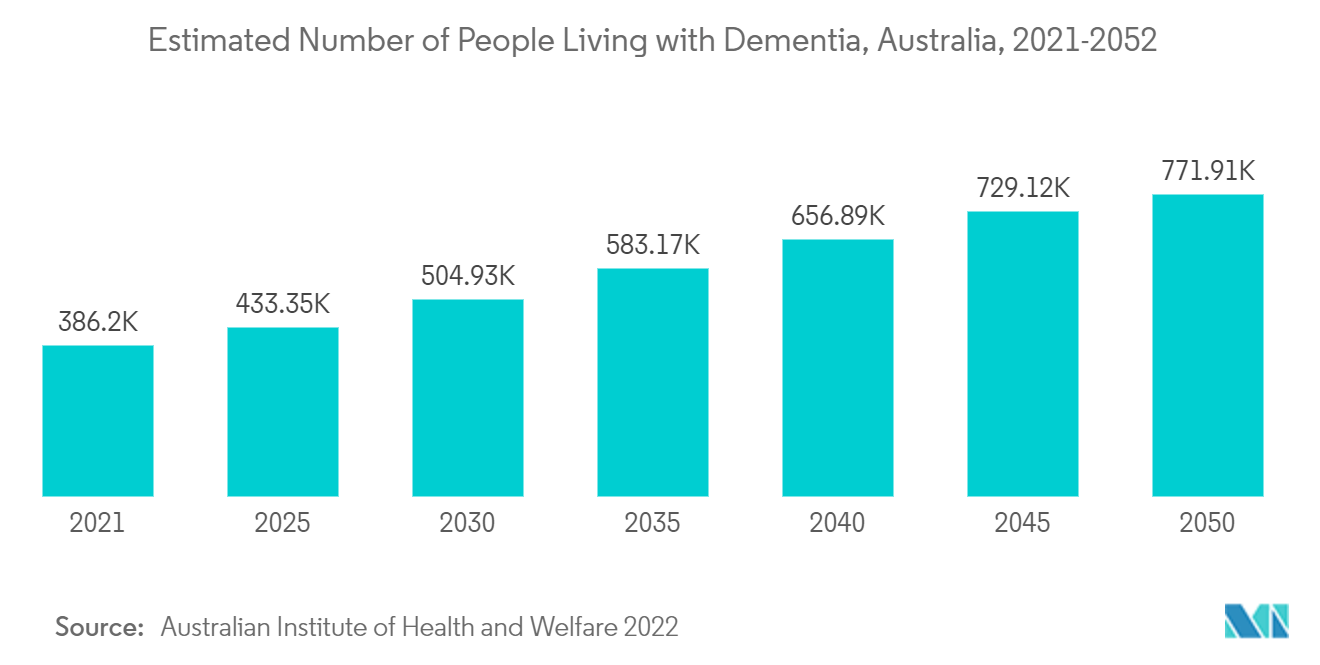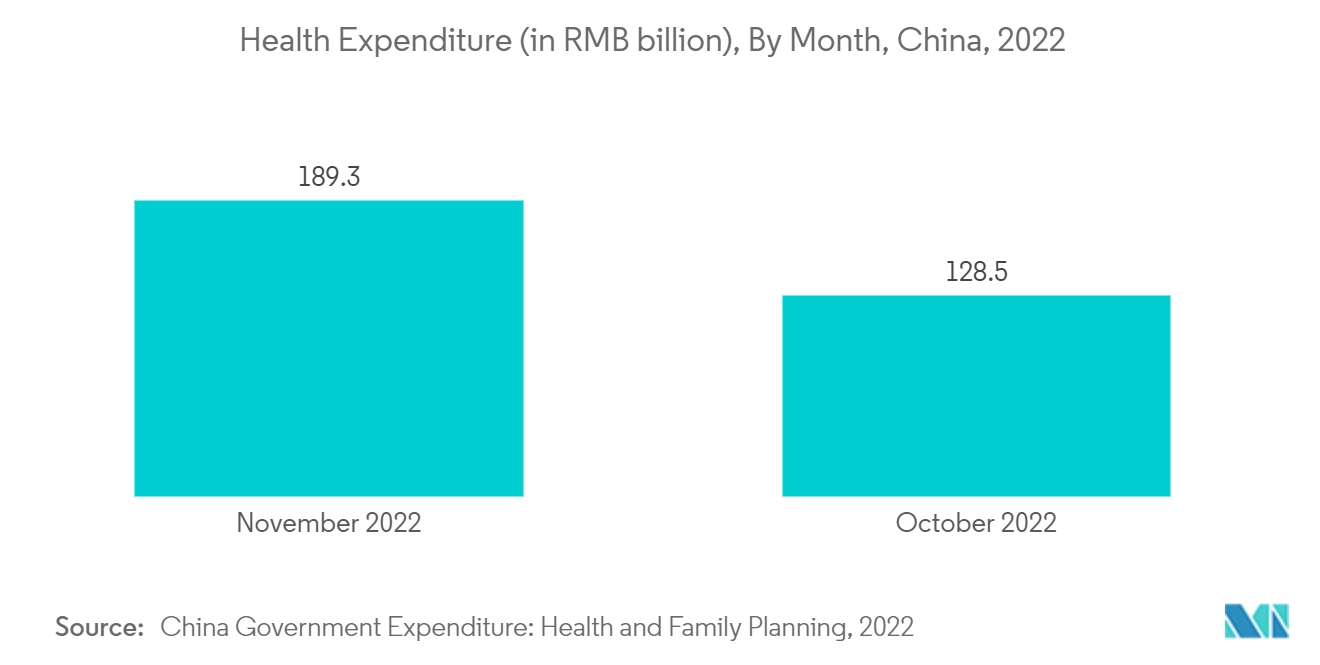Market Trends of Asia Pacific Magnetic Resonance Imaging (MRI) Industry
This section covers the major market trends shaping the APAC MRI Market according to our research experts:
Neurology Segment is Expected to Hold Major Market Share and is Believed to Continue the Same Over the Forecast period
Magnetic resonance imaging (MRI) is the best diagnostic and neuroscience research tool. It provides morphological images with the highest spatial resolution, unmatched soft tissue contrast, and unique functional information about the central nervous system (CNS). MRI can detect disorders as well as monitor degenerative diseases like multiple sclerosis, Alzheimer's disease, and dementia, and it can even document brain injury from trauma. For instance, as per the Australian Institutes of Health and Welfare report published in September 2022, between 386,200 and 487,500 Australians were predicted to have dementia in 2022. This equates to 15 cases of dementia per 1,000 Australians, which rises to 83 cases per 1,000 Australians aged 65 and above. In Australia, women make up about two-thirds of dementia patients. Thus, increasing cases of dementia in the future will create a demand for MRI scans in Australia and will contribute to market growth.
Moreover, major players are strategically introducing new innovative technologies into MRI products for improved prediction of brain disorders. For instance, in November 2021, in Japan, Canon Medical launched the Vantage Fortian, a new advanced productivity, open-bore 1.5T MRI system, at RSNA 2021. The new system features innovative workflow solutions, image enhancement, and accelerated scan technology. It used AI smart technologies, machine learning, and deep learning technology to enhance image quality by removing noise and restoring SNR. Thus, this new MRI technology is expected to increase the demand for the studied segment in the future.
Furthermore, in December 2021, Canon Medical Systems Corp. signed a licensing arrangement with Resoundant Inc. to include its technology in Canon's newest line of magnetic resonance imaging. Although research is underway to use Resoundant's MRE technology to scan other soft organs and brains. Hence, the use of MRI is expected to increase in the coming years in the diagnosis of the disease, which will drive the segment shortly.

China is Expected to Hold a Significant Market Share Over the Forecast Period
Factors such as the increasing burden of chronic diseases, growing healthcare spending, and initiatives by key market players are expected to increase market growth. China has one of the country's highest burdens of chronic diseases, such as cancer, which are expected to drive the development of the studied market over the years. CVD is one of China's greatest healthcare burdens, according to a study published in the International Journal of Public Health in April 2022. In 2021, there will be 290 million people in China suffering from cardiac disorders (13 million), stroke, coronary heart disease (11 million), rheumatic heart disease (2.5 million), heart failure (4.5 million), congenital heart disease (2 million), pulmonary heart disease (5 million), and hypertension (245 million). Thus, the growing prevalence of chronic diseases is expected to boost demand for MRI devices, thereby boosting the market growth.
Product launches are another factor in market growth. For example, in August 2021, Siemens Shenzhen Magnetic Resonance Ltd (SSMR), a wholly owned subsidiary of Siemens Healthineers, introduced to the Chinese market a high-end magnetic resonance (MR) scanner powered by artificial intelligence, the 1.5 Tesla (1.5T) MAGNETOM Altea. Similarly, in July 2021, Neusoft Medical launched NeuMR Libra MRI at the China International Medical Equipment Fair in Shanghai. Thus, the abovementioned factors, such as the growing burden of chronic diseases and product launches, are expected to increase the market growth.


